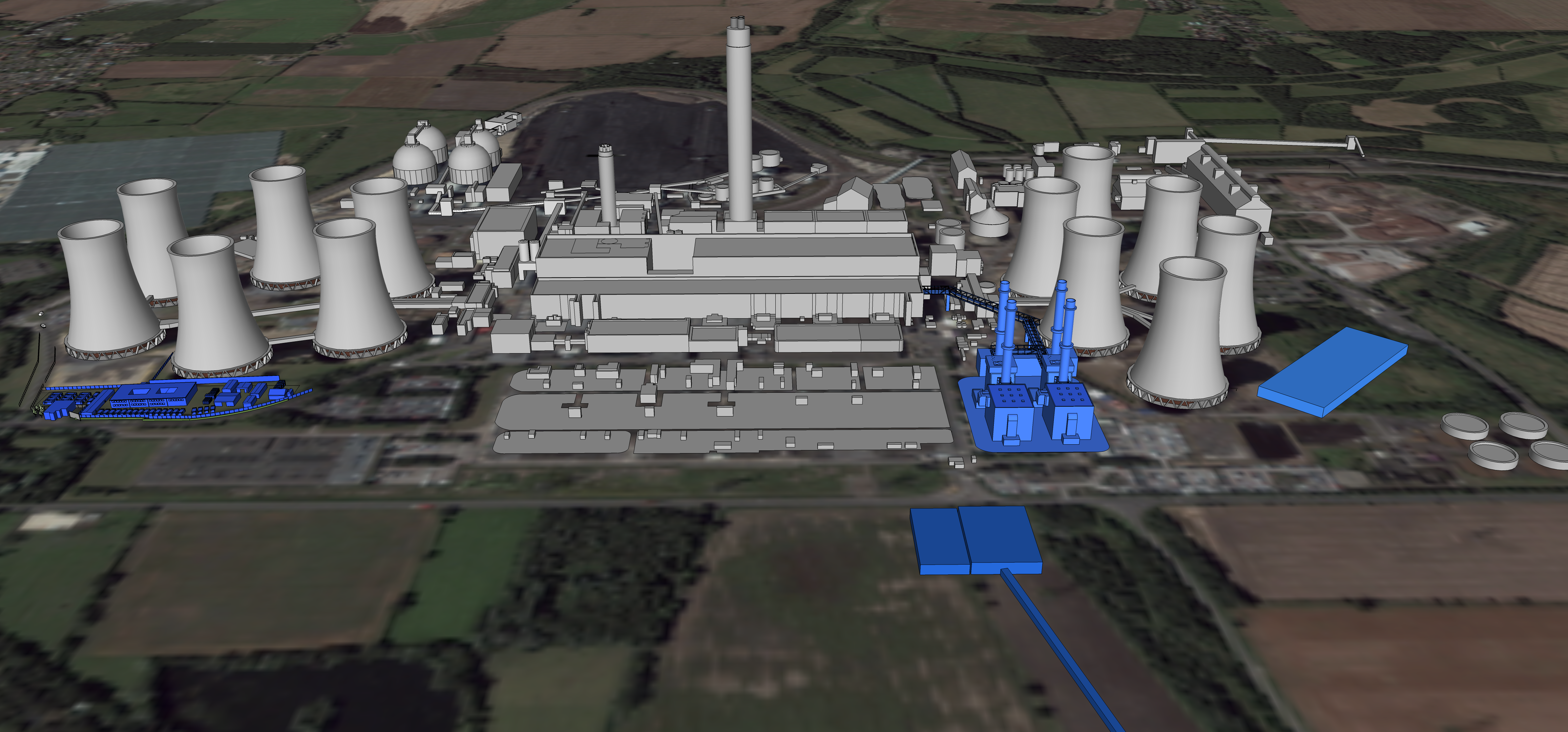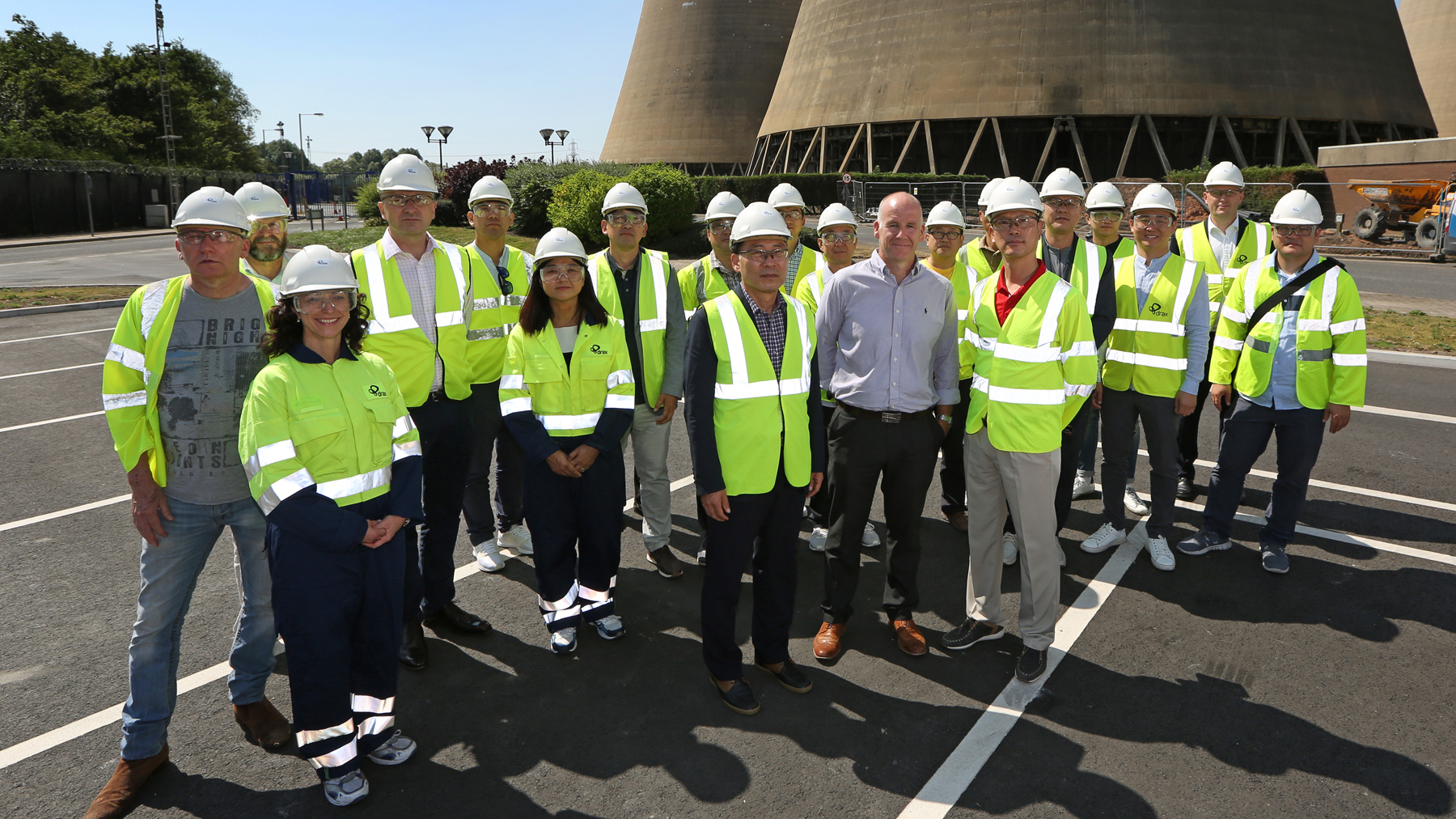
But now the country’s biggest power station has met with the British Beer & Pub Association to see if it can keep the pep in the nation’s pints.
Drax, which owns Britain’s biggest power station, near Selby in North Yorkshire, is about to begin a pilot trialling the first Bioenergy Carbon Capture and Storage (BECCS) project of its kind in Europe, which could make the renewable power generated at Drax carbon negative.
 If successful the BECCS project could also help to secure future access to CO2 for the UK’s breweries and pubs.
If successful the BECCS project could also help to secure future access to CO2 for the UK’s breweries and pubs.
During a six month trial, due to get underway in the next few months, a tonne of CO2 could be captured and stored each day from one of the power station’s biomass fuelled generating units.
That’s enough to produce the fizz for 32,000 pints of beer a day – equivalent to 5.7 million over the course of the six month project, which is more than enough to put the bubbles in a pint for everyone in Yorkshire.
If successful, the technology being trialled could be scaled up to capture even more CO2 at the power station – the largest single site renewable power generator in the country.
Will Gardiner, Drax Group CEO, said:
“We’re excited to be discussing our BECCS project with the BBPA. This pilot not only has the potential to ensure the UK meets its climate targets, but for the carbon captured to also help to keep the nation’s beer from going flat – and we’d certainly raise a glass to that.”
Brigid Simmonds, British Beer & Pub Association CEO, said:
“Beer is the nation’s favourite alcoholic beverage and on average pubs serve as much as 10 million pints of beer per day, so the recent shortfall of CO2 was most unwelcome. We hope that these discussions with Drax Group and the potential to increase access to a new source of CO2 in the UK will help ensure that a shortage does not happen again.”
Enabling other industries to use the CO2 produced from Drax’s renewable power generation, has the potential to allow businesses to use the carbon dioxide from a renewable source without contributing additional greenhouse gases into the atmosphere – making their processes carbon neutral.
ENDS
Media contacts:
Ali Lewis
Drax Group Head of News
E: [email protected]
T: 07712 670888
Jessica Gorton
Drax Group Press Officer
E: [email protected]
T: 020 3943 4305
Drax announced its BECCS pilot in May. The carbon captured will be stored on site in compressed form with a view to working with partner organisations able to use the carbon to create further value in their own processes.
Editor’s notes
- Drax is working with Leeds-based C-Capture which has developed the technology for the project.
- Drax has invested £400,000 in the trial which could be the first of several pilot projects undertaken at the power station to deliver a rapid, lower cost demonstration of BECCS.
- BECCS is vital to global efforts to combat climate change because the technology will mean the gases that cause global warning can be removed from the atmosphere at the same time as electricity is produced. This means power generation would no longer contribute to climate change, but would start to reduce the carbon accumulating in the atmosphere.
- A report by the Energy Technology Institute in 2016 has suggested that by the 2050s BECCS could deliver roughly 55 million tonnes of net negative emissions a year in the UK – approximately half the nation’s emissions target.
About Drax
Drax Group plc plays a vital role in helping change the way energy is generated, supplied and used. Its 2,300-strong staff operate across three principal areas of activity – electricity generation, electricity sales to business customers and compressed wood pellet production.
The Group includes:
Drax Power Ltd, which operates the largest power station in the UK, based at Selby, North Yorkshire and supplies six percent of the country’s electricity needs. The energy firm converted from burning coal to become a predominantly biomass-fuelled electricity generator. Drax is the biggest single site renewable generator in the UK and the largest decarbonisation project in Europe.
Haven Power, based in Ipswich, supplies electricity to large Industrial and Commercial sector businesses.
Opus Energy, based in Oxford, Northampton and Cardiff, provides electricity and gas to small and medium sized (SME) businesses.
Drax Biomass, is based in the US and manufactures compressed wood pellets produced from sustainably managed working forests, supplying fuel used by Drax Power Station in North Yorkshire to generate flexible, renewable power for the UK’s homes and businesses.
For more information visit www.drax.com/uk














